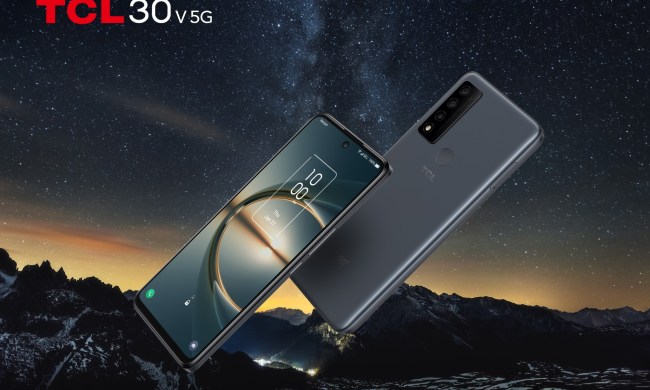This story is part of our continuing coverage of CES 2020, including tech and gadgets from the showroom floor.
Laptops can be boring. Another year, another round of minor updates. If CES 2020 has shown us anything, it’s that that won’t be true in 2020.
From Dell to Lenovo, we’ve been flooded with new laptops, and four substantial trends emerged that point us toward the future of laptop design.
Dual-screen laptops

Laptops with two screens might sound futuristic, but get ready because it’s happening. It started in 2019 with Microsoft’s announcements of the dual-screen Surface Duo and Surface Neo. As we expected, third-party manufacturers now have their own alternatives.
Dell launched two concepts in the dual-screen laptop space: The Dell Duet and the Dell Ori. The Ori has a foldable screen like the X1 Fold, while the Duet actually has two screens and is more in the vein of the Surface Neo. The Duet’s screens are larger, measuring in at a more standard 13-inch laptop size. Even Intel brought a foldable PC: The 17-inch Horseshoe Bend prototype.
The most impressive, though, was the ThinkPad X1 Fold from Lenovo. This one doesn’t technically have two displays, but instead uses a single OLED panel that folds in half, like the Samsung Galaxy Fold smartphone. When folded, these two sides of the screen can be used as one continuous space or two separate ones for multitasking. The magnetic keyboard fits snugly between the two sides of the screen, folding neatly into a single folio package. The X1 will be the first dual-screen laptop to ship, with a planned launched in July of a model running a standard version of Windows 10.
None of the systems ran a working version of Windows 10X, Microsoft’s new software for dual-screen laptops. Until then, we won’t get a true idea of what these devices are capable of. Either way, they’ve already made a huge splash.
Taller aspect ratios

Laptops have been trending toward taller aspect ratios for years now. The MacBooks have always used 16:10, while devices like the Surface Laptop or Pixelbook favor a boxier 3:2 aspect ratio. But with Dell moving its popular XPS 13 to 16:10 and cheaper competitors like the Acer Swift 3 deciding on 3:2, the trend has picked up some serious steam this year CES.
The reason? Well, a taller aspect ratio means you can see more of webpages and documents. More importantly, as bezels have increasingly shrunk, the footprint of laptops keeps shrinking as well. That leaves less room for things like larger keyboards, touchpads, batteries, and airflow. Smaller laptops are great for plane rides, but they can have limitations on things like performance and screen size.
There are still holdouts for 16:9, of course. HP and Lenovo have both released a bevy of updated laptops at CES that use that more cinematic size. Come next year, I wouldn’t be surprised if these companies changed course too.
5G has arrived

The endless chatter about 5G never seems to relent. But with laptops, it’s really only getting started. As 5G went through its slow rollout through select cities and locations in 2019, interest in some 5G-enabled laptops has slowly crept up. The first few 5G-enabled laptops launched at CES this year, and all of them are business-minded and feature 2-in-1 functionality.
The HP Elite Dragonfly, the first to get announced, is a refresh of a recent laptop that features 5G capability built in. The Dragonfly with 5G won’t be available until midyear, however. Next, Dell launched a new Latitude 9510, a simple business laptop with 5G built right in.
Last is the Lenovo Yoga 5G, formerly known as Project Limitless. This is a new design, though it doesn’t make any significant deviations from similar Yoga laptops outside the increased connectivity. It’s the most consumer-focused of the three, and shows some interest in launching a 5G laptop for the average person.
Ryzen laptops make a splash

AMD’s rising success has been one of the biggest stories in computing over the past couple of years. Laptops were always AMD’s weakness, though. Despite all the advances it’s made in high-end desktop processors and graphics cards, Intel still dominates the field in laptops.
At CES 2020, that hasn’t changed. AMD’s new Ryzen 4000 processors look amazing, but the majority of new laptops still use Intel. There’s no question about that.
But AMD did have a couple of examples ready to show off. The ROG Zephyrus G14 boasts the kind of extreme portability and power that’s possible with Ryzen 4. Even more interesting was the Lenovo Yoga Slim 7, which is a standard thin-and-light 2-in-1 — with one twist. It has AMD’s Ryzen 4 processors packed with a whopping eight cores. That makes it a laptop unlike any other in its category.
AMD says it aims to have over 100 designs before the end of the year. If that proves to be true, AMD might have a serious chance at competing in the laptop space for the first time.
Follow our live blog for more CES news and announcements.


